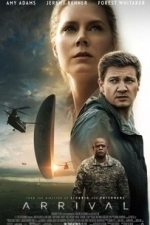
Cross-Functional Inventory Research
Book
'Joe Thomas is a true renaissance academic who has integrated research, teaching, practice and...

Vocabulary Flashcards - SAT
Education and Games
App
Master the 350 most important SAT vocabulary words with fun flashcards for your Android! Study and...

Evolve Basketball
Sports and Social Networking
App
Evolve Basketball App is an all in one basketball training app. It is a complete tool that allows a...
Bob Mann (459 KP) rated Arrival (2016) in Movies
Sep 29, 2021
Because the trailer for “Arrival” belies absolutely nothing about the depth and complexity of the film. At face value, it looks like a dubious “Close Encounters” wannabe, with a threat of movement towards the likes of “Independence Day” and “The 5th Wave”. Actually what you get is a film that approaches the grandeur of “Close Encounters” but interlaces it with the intellectual depth of “Inception”, the mystery of “Intersteller” and a heavy emotional jolt or two of “Up”.
Amy Adams (“Batman vs Superman”) plays Dr Louise Banks, a language teacher at a US university facing a bunch of particularly disengaged students one morning. For good reason since world news is afoot. Twelve alien craft have positioned themselves strategically around the world, hanging a few feet from the ground in just the sort of way that bricks don’t. Banks is approached by Colonel Weber (Forest Whitaker) and offered the job of trying to communicate with the aliens: where did they come from? why are they here? Banks faces the biggest challenge of her academic career in trying to devise a strategy for communication without any foundation of knowledge on what level communication even works at for them. Assisted by Ian Donelly (Jeremy Renner, “Mission Impossible IV/V”, “Avengers”), a theoretical physicist, the pair try to crack the code against a deadline set by the inexorable rise of international tensions – driven by China’s General Chang (Tzi Ma, “Veep”; “24”).
Steven Spielberg made a rare error of judgement by adding scenes in his “Special Edition” of “Close Encounters of the Third Kind” showing everyman power guy Roy Neary (Richard Dreyfuss) entering the alien spacecraft. Some things are best left to the imagination. Here, a reprise of that mistake seems inevitable, but – perversely – seems to be pulled off with mastery and aplomb. The aliens are well rendered, and the small scale nature of the set (I’m sure I’ve been in similar dingy waiting rooms in UK railway stations!) is cleverly handled by the environmental conditions.
But where the screenplay really kills it is in the emergence of the real power unleashed by the translation work. To say any more would deliver spoilers, which I won’t do. But this is a masterly piece of science-fiction writing. The screenplay was by Eric Heisserer – someone with a limited scriptwriting CV of horror film reboots/sequels such as “Final Destination 5”, “The Thing” and “A Nightmare on Elm Street” – so the portents were not good, which just adds to the surprise. If I were to be critical, some of the dialogue at times is a little TOO clever for its own good and smacks of Aaron Sorkin over-exposition: the comment about “They have a word for it in Hungary” for example went right over my head.
Denis Villeneuve (“Sicario”) deftly directs, leaving the pace of the story glacially slow in places to let the audience deduce what is going on at their own speed. This will NOT be to the liking of movie fans who like their films in a wham-bam of CGI, but was very much to my liking. The film in fact has very little exposition, giving you lots to think about after the credits roll: there were elements of the story (such as her book) that still generated debate with my better half on the drive home.
Amy Adams and Jeremy Renner are first rate and an effectively moody score by Jóhann Jóhannsson (“Sicario”; “The Theory of Everything”) round off the other high-point credits for me.
An extraordinary film, this is a must see for sci-fi fans but also for lovers of good cinema and well-crafted stories.
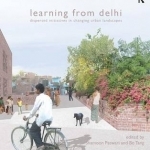
Learning from Delhi: Dispersed Initiatives in Changing Urban Landscapes
Maurice Mitchell, Bo Tang and Shamoon Patwari
Book
The inflexibility of modern urban planning, which seeks to determine the activities of urban...

The Strategy Builder: How to Create and Communicate More Effective Strategies
Duncan Angwin and Stephen Cummings
Book
A visual and interactive guide to building and communicating strategies that actually work YOUR...
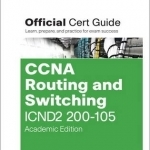
CCNA Routing and Switching ICND2 200-105 Official Cert Guide
Book
Trust the best-selling Official Cert Guide series from Cisco Press to help you learn, prepare, and...
Kelly J Tyrrell (3 KP) rated Inspired: Slaying Giants, Walking on Water, and Loving the Bible Again in Books
May 21, 2018
I should start by saying - I filled out an application to be on the Launch Team for this new book, so I received an Advanced Reader Copy from the Publisher.
I first came across Rachel Held Evans when her book A Year of Biblical Womanhood crossed upon my Goodreads page. I thought, "Now there's a crazy idea", and while it was, the writing was not. The writing was wonderful! I followed along to grab Searching for Sunday, too.
So as any good 21st century fan, I started following Evans on Facebook, where I saw polls for naming a new book. A new book?? Yay! Never in my wildest dreams did I think I'd get to be reading it a month in advance of release.
"Bible stores don't have to mean just one thing."
Inspired is largely about the importance of stories. Not just Bible stories , but our own stories, too. Stories like how your Grandpa had to quit smoking to get Grandma to go out with him. Stories like how you met your spouse over $0.25 tacos. Stories like how your great-uncle got kicked out of military school necessitating not one, not two, but FOUR rosaries at his funeral.
There are stories about who we are, where we come from, what we're willing to fight for, and what we've learned along the way. There are stories of good news and bad, and who we make community with. And the Bible is no different. Rather than dissecting all of the stories of the Bible, Evans divides the book into genres of stories. There are Wisdom stories, stories of deliverance, Church stories, and of course, Gospels.
"The good news is good for the whole world, certainly, but what makes it good varies from person to person, and community to community."
This theme of interpretation is recurrent through the whole book. Bible stories, gospel stories, war stories - none of them have one singular meaning. For Evans, growing up in a tradition that took the Bible as literally true and the inerrant Word of God, one singular meaning was not only suggested, but preached everyday. And though I grew up Catholic, and not Evangelical Protestant, I can relate.
Leaving the Catholic faith in my late teens to re-emerge as a Progressive Protestant in my thirties has been an eye-opening experience to say the least. I've never known anyone who takes the Bible literally (or at least if I did, I didn't know it). Not until I started homeschooling did I ever meet a person who actually believed in Creation. I guess what I'm trying to say, is that it has never occurred to me to take the Bible literally.
But I am, overall, an academic person. I love to read, analyze, and over-think everything. But since I did not grow up with the Bible's cast of characters like old friends, I was thirty-years-old before I started attending Bible studies at my local church. Instantly, I was sucked in to the weirdness and messiness of the Bible. Which made me ask - how does one even take the Bible literally?
"The truth is, the bible isn't an answer book. It's not even a book, really. Rather it's a diverse library of ancient texts, spanning multiple centuries, genres, and cultures, authored by a host of different authors coming from a variety of different perspectives...No one has the originals."
You could almost say that God delighted in canonizing inconsistencies, trusting that we could use our [God given] intellect to figure out what it needed to mean.
Because, things change, don't they? A historical, analytical approach to studying the Bible tells us that time, place, and context matter. The Epistles of Paul were not written to us. They were written to the church in Corinth, or Thessalonica, or Ephesus. And by church, I mean incredibly small groups of people, gathered in someone's house, illegally I might add. They weren't written to the 2.1 billion of us, flaunting our religion around the world like we own the place.
Indeed, Inspired was so good, and covered such a rich variety of story types, that if I keep talking, I'm going to ruin it for you. So, I guess I'll leave you with this. If you have ever read the Bible and thought:
...how could God just leave Tamar like that?
...how could God call David a man after his own heart?
...Jesus sure does touch a lot of people he ain't supposed to, what's up with that?
...what's so bad about being a tax collector, anyway?
you should probably read this book. NOT because this book answers any of those questions. It doesn't. It doesn't even try to. Rather, Rachel Held Evans in her Southern mama wisdom, helps remind us that maybe having all the answers isn't actually the answer. Maybe reveling in the magic of the Bible is the Hokey Pokey. Maybe that IS what it's all about.
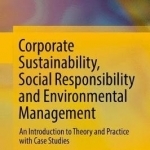
Corporate Sustainability, Social Responsibility and Environmental Management: An Introduction to Theory and Practice with Case Studies
Book
This book provides a concise and authoritative guide to corporate social responsibility (CSR) and...
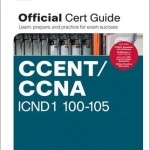
CCENT/CCNA ICND 100-105 Official Cert Guide
Book
Trust the best-selling Official Cert Guide series from Cisco Press to help you learn, prepare, and...
